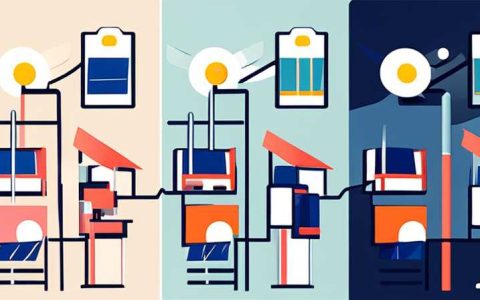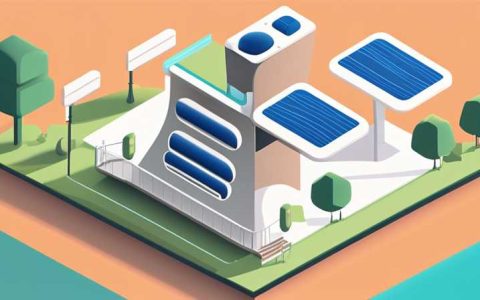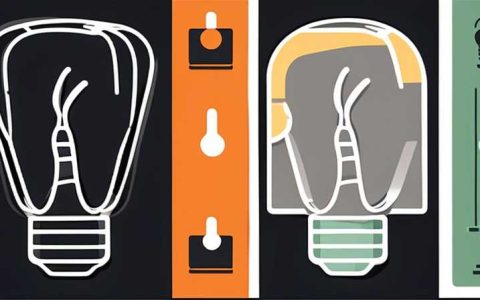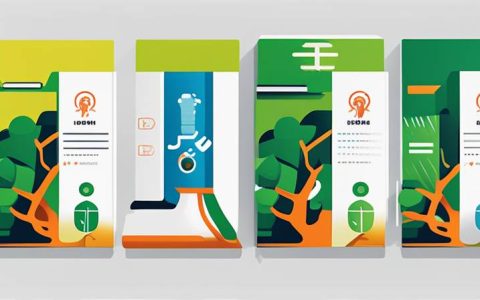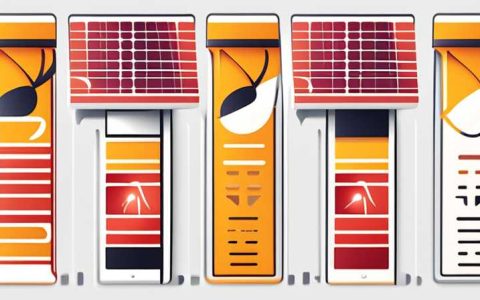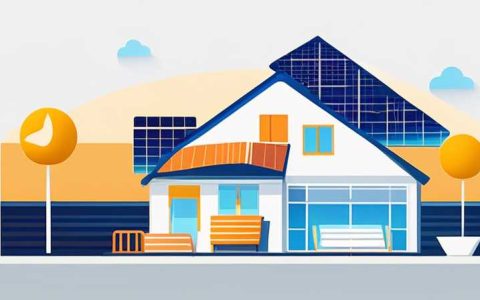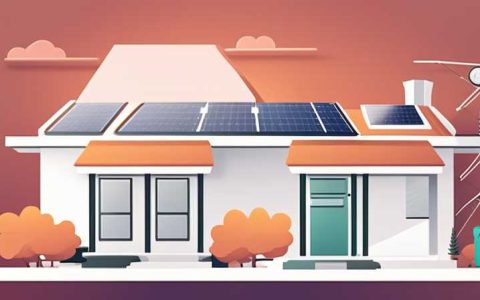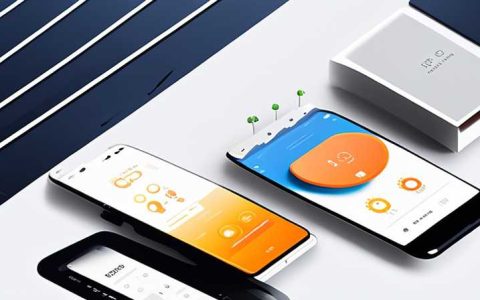<img src=https://nenpower.com/wp-content/uploads/2024/11/image-31214.jpg alt=’What’s wrong with the side leakage of solar panel?’ />
What’s wrong with the side leakage of solar panel?
1. Presence of moisture, 2. Potential for reduced efficiency, 3. Risk of corrosion, 4. Compromise of electrical systems. The presence of moisture can lead to short circuits, impacting the solar panel’s functionality and lifespan. Moisture can infiltrate the solar panel through manufacturing defects or environmental factors, which can create pathways for electrical leakage. When moisture is present, it can cause a variety of issues, including cracking of the protective layers and disintegration of the solar cells. This phenomenon not only diminishes efficiency but may ultimately lead to system failure, necessitating costly repairs or replacements.
1. UNDERSTANDING SIDE LEAKAGE IN SOLAR PANELS
Contemplating the concept of side leakage is vital for comprehensively examining solar panel systems. Side leakage pertains to the unintentional escape of electrical energy through unintended pathways, often presenting significant challenges for solar technology users. Hydrophobic coatings, typically employed to protect photovoltaic cells, can degrade due to several factors, leading to moisture infiltration. Such coatings are crucial in ensuring that solar panels operate at peak efficiency; however, if compromised, they can open the door for potential failures.
This leakage often stems from manufacturing defects or environmental stressors. For instance, extreme temperatures or prolonged exposure to harsh weather conditions can cause the protective seals of a solar panel to wear away. As a consequence, moisture enters, triggering corrosion and electrical imbalances. Various studies suggest that recognizing these weaknesses in a solar panel’s construction can help mitigate future risks. The ideal preventive measures and maintenance tasks have emerged as essential practices in prolonging the effective operational lifespan of solar panels.
2. IMPACT OF MOISTURE INFILTRATION
A closer examination of the effects of moisture infiltration reveals considerable implications for solar panel integrity. When moisture seeps in, it introduces opportunities for corrosion of metal components within the panel. This corrosion not only damages the physical structure but it can lead to further occurrences of electrical faults. As corrosion progresses, the pathways through which electrical currents flow may become impeded or disrupted, causing significant reductions in efficiency.
Additionally, moisture can wreak havoc on the delicate solar cells, stirring up negative reactions that decrease their capacity to convert sunlight into usable energy. Moreover, the presence of moisture may lead to the formation of mold or mildew within the solar panel structure. This unforeseen biological growth disrupts the panel’s functionality and may necessitate urgent intervention, ideally before permanent damage is inflicted. Understanding these mechanisms will allow users to implement preventative measures that safeguard against moisture-related issues.
3. SIGNIFICANCE OF ELECTRICAL INTEGRITY
Maintaining electrical integrity is of paramount importance when discussing the implications of side leakage in solar panels. Electrical integrity refers to the reliability and performance of a solar panel’s electrical systems. A compromised panel can lead to fluctuations in power output, resulting in an erratic supply of energy. This inconsistency can negatively affect any systems relying on the solar panel for power, whether in residential or commercial contexts.
Furthermore, when side leakage occurs, the potential for short circuits also intensifies. Short circuits can not only disrupt the operation of the solar panel itself but also pose significant safety hazards, including fire risks. As such, it becomes crucial for technicians and maintenance personnel to consistently assess panels for signs of leakage and undertake systematic checks and repairs. By prioritizing electrical integrity, the longevity, efficiency, and safety of solar systems can be preserved significantly.
4. COMBATING CORROSION RISKS
Corrosive processes are a substantial concern relative to side leakage in solar panels, potentially leading to dire consequences if left unchecked. The corrosion risk tends to increase with the presence of moisture, particularly in coastal areas where saltwater exposure could elevate the chances for degradation. The consequences of corrosion can render even the most advanced solar panels less effective and reliable. As corrosion develops, conductive materials lose their efficacy, leading to inefficiencies and failures.
Techniques to combat these risks require a multifaceted approach, beginning with selecting materials designed to withstand environmental stressors. Innovative coatings featuring corrosion resistance can also play a significant role in prolonging the panel’s lifespan. Regular maintenance, inspections, and immediate remediation upon detecting signs of corrosion can further mitigate these risks. Therefore, acknowledging the various aspects of corrosion contributes to establishing a resilient solar panel system.
5. MAINTENANCE TO PREVENT SIDE LEAKAGE
Implementing a proactive maintenance strategy remains essential in circumventing the occurrence of side leakage. Proper maintenance serves as an indispensable companion to the integrity and efficiency of solar panels. Regular inspections allow for the early detection of possible leaks, ensuring any necessary repair processes are executed promptly to minimize damage. This not only improves performance but also prolongs the longevity of the solar investment.
Further, ensuring that any debris or foliage does not obstruct sunlight or trap moisture around the solar panel surfaces plays a vital role in maintenance. Conducting routine cleanings includes washing the panel’s surface and ensuring that the mounting infrastructure is intact and secure. Preventive measures such as these pave the way for commanding better reliability and performance from the solar panels, thus securing the investments made in renewable energy.
FREQUENTLY ASKED QUESTIONS
WHAT CAUSES SIDE LEAKAGE IN SOLAR PANELS?
Multiple factors contribute to the phenomenon of side leakage in solar panels, chiefly, inadequacies during the manufacturing process. If the protective seals are not properly applied or if inferior materials are utilized, vulnerabilities can arise. Subsequently, exposure to environmental elements such as rainfall, humidity, and extreme temperature fluctuations enhances the likelihood of moisture penetration. Furthermore, neglecting routine maintenance can exacerbate wear and tear, further tilting the odds toward leakage.
HOW CAN SIDE LEAKAGE AFFECT SOLAR PANEL PERFORMANCE?
The ramifications of side leakage on solar panel performance can be extensive. Primarily, moisture infiltration compromises the electrical systems, potentially causing power fluctuations. As a result, the solar panels may deliver an inconsistent energy supply, which can hinder energy efficiency and reliability. In severe cases, electrical faults may occur that lead to system failures, requiring costly repairs or replacements. Therefore, ensuring the integrity of solar panels is paramount for optimal performance.
HOW CAN I CHECK FOR SIDE LEAKAGE IN MY SOLAR PANELS?
Identifying side leakage in solar panels is often best accomplished through visual inspections and electrical testing. Carefully inspecting the solar panels for any signs of visible damage, discoloration, or moisture build-up is crucial. Utilizing specialized equipment to measure the electrical output and analyze for discrepancies can provide further insight into the efficiency of the panels. Collaborative efforts between homeowners and skilled professionals in conducting these assessments stand to ensure the longevity and reliability of the solar energy systems.
To summarize, recognizing the challenges arising from side leakage is imperative for effectively managing solar panel systems. The issues stemming from moisture infiltration hold profound implications. It threatens the integrity of solar panels while compromising their efficiency and safety. A deeper understanding of the contributing factors, effective maintenance strategies, and the importance of electrical integrity are paramount components in cultivating a long-lasting, efficient solar energy system. Proactive measures — such as regular inspections, moisture control, and judicious material selections — can avert many issues associated with side leakage. As the solar energy sector continues to grow, exploring these critical concerns will merit significant attention, ensuring users can harness the full potential of renewable energy resources while mitigating risks effectively. The investment in solar energy remains a sustainable choice; understanding the nuances such as side leakage, can cultivate a more reliable and resilient energy future.
Original article by NenPower, If reposted, please credit the source: https://nenpower.com/blog/whats-wrong-with-the-side-leakage-of-solar-panel/

